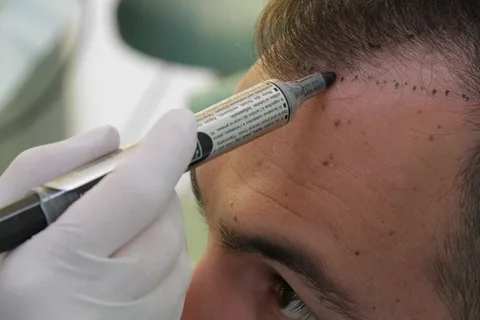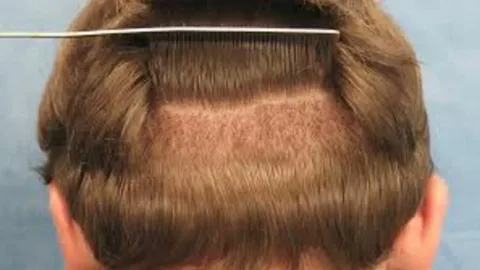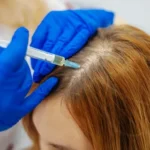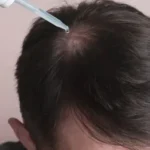Wondering when will hair cloning be available to the public? Discover the latest advancements in hair cloning, its benefits, and what to expect in the future of hair restoration. Learn more from Dr. Uzma Irfan, a leading expert in hair loss treatments.
Hair loss is a widespread issue, affecting millions of people across the globe. Whether it’s due to genetics, age, or other factors, losing hair can significantly impact a person’s self-esteem. As a result, people are constantly looking for effective solutions to restore their hair. One of the most anticipated breakthroughs in hair restoration is when will hair cloning be available to the public? Hair cloning offers the promise of a permanent, natural, and non-invasive solution for hair loss, but it still faces several challenges before it becomes a mainstream treatment.
Dr. Uzma Irfan, a leading hair restoration expert, is at the forefront of advanced treatments in Islamabad. She offers a wide range of hair restoration options, and as the field of hair cloning advances, Dr. Irfan keeps her patients informed about the potential availability of this cutting-edge treatment.

The Current State of Hair Cloning Research
When will hair cloning be available to the public? The answer isn’t straightforward, as it depends on several factors, including advancements in medical research, technological developments, and regulatory approvals. However, understanding the current state of research will help us get closer to that answer.
1. Scientific Advancements in Hair Cloning
Hair cloning involves the replication of hair follicles, which are then implanted back into the scalp. This technology, while promising, has been in the research phase for several years. Recent studies have shown progress in cloning hair follicles using stem cells, but the process still faces significant challenges in terms of efficiency and consistency.
2. The Role of Stem Cells and Regenerative Medicine
Stem cells play a crucial role in the development of hair cloning. These cells are used to create new hair follicles that can be transplanted into areas of the scalp affected by hair loss. The latest research on causes and treatments has shown that stem cell technology could eventually lead to effective hair cloning solutions.
3. Safety and Regulatory Hurdles
Before when will hair cloning be available to the public, the technology must undergo rigorous clinical trials to ensure its safety and efficacy. This process can take several years as researchers work to refine the procedure and ensure that it does not result in unwanted side effects or complications. Regulatory bodies such as the FDA will need to approve hair cloning before it can be offered to the general public.
How Hair Cloning Works
Once when will hair cloning be available to the public is answered, the procedure will likely follow these steps:
1. Extraction of Hair Follicles
The first step in hair cloning involves extracting a small number of hair follicles from a donor site, typically from the back of the head, where hair growth is more robust. These follicles are then cloned using laboratory techniques.
2. Cloning and Culturing the Hair Follicles
Once extracted, the hair follicles are cultured in a lab setting, where they are multiplied into a larger number. This allows for the creation of new hair follicles that will match the patient’s existing hair.
3. Re-implantation into the Scalp
After the follicles have been cloned, they are re-implanted into areas of the scalp that are experiencing hair loss. This process is designed to restore natural hair growth in areas where hair follicles have become dormant or have been lost altogether.
Benefits of Hair Cloning
When hair cloning becomes available to the public, it promises several key benefits over traditional hair restoration methods:
1. Permanent Results
Unlike other treatments such as hair transplants or topical medications, hair cloning offers the possibility of permanent, natural results. Once the cloned hair follicles are successfully implanted, they will continue to grow and function like natural hair.
2. No Risk of Rejection
Because the cloned hair follicles come from the patient’s own body, the risk of rejection is minimal. This makes the procedure safer than some alternatives, where the body may not accept transplanted hair follicles from a donor.
3. Non-Invasive Treatment
Hair cloning is expected to be a non-surgical treatment, unlike hair transplants that involve cutting and stitching. This reduces recovery time and eliminates the need for invasive procedures.
Expected Timeline: When Will Hair Cloning Be Available to the Public?
When will hair cloning be available to the public is a common question for those waiting for a permanent solution to hair loss. While significant progress has been made, it’s likely that this technology won’t be available for widespread use until the next 5-10 years. Researchers are still working to perfect the process, and regulatory approval is required before it can be offered to patients worldwide.
Dr. Uzma Irfan’s Expertise in Hair Restoration
While when will hair cloning be available to the public remains unclear, Dr. Uzma Irfan’s clinic in Islamabad offers several other cutting-edge treatments for hair loss. These treatments include:
- Follicular Unit Extraction (FUE): A minimally invasive hair transplant technique that involves the removal of individual hair follicles from the donor area and transplanting them into the recipient area.
- Platelet-Rich Plasma (PRP) Therapy: A non-surgical treatment that uses the patient’s own blood to stimulate hair growth.
- Mesotherapy: A treatment that involves injecting a blend of vitamins, enzymes, and other substances into the scalp to promote hair growth.
Dr. Irfan combines years of experience with the latest advancements in hair restoration to offer the most effective treatments available. As hair cloning technology advances, Dr. Irfan will continue to provide her patients with the most effective, cutting-edge hair restoration options.
Local and International Relevance
Dr. Uzma Irfan’s clinic is based in Islamabad, Pakistan, and attracts patients from all over the world. With the rise of medical tourism, many international patients seek Dr. Irfan’s expertise for hair restoration treatments, including potential future options like hair cloning.

Book Your Consultation Today
Are you looking for an effective solution to hair loss while waiting for when will hair cloning be available to the public? Book a consultation with Dr. Uzma Irfan today to explore our range of advanced treatments, including FUE and PRP therapy.
- Contact us via WhatsApp or phone to schedule your appointment.
- Explore our before-and-after gallery to see the transformative results of our treatments.
- Learn more about the cutting-edge solutions we offer for hair restoration.
FAQ Section
When will hair cloning be available to the public?
While hair cloning is showing great promise, it will likely take 5-10 years of research and regulatory approval before it is available to the public.
What are the benefits of hair cloning over other treatments?
Hair cloning offers permanent results, minimal risk of rejection, and a non-invasive procedure compared to traditional hair transplants.
How long does it take to see results from hair cloning?
Once available, hair cloning results will take several months to fully appear, as new hair follicles grow and mature.
Are there any risks involved with hair cloning?
As with any medical procedure, hair cloning will involve some risks, but early research shows it is safe when performed by experienced professionals.
How much will hair cloning cost?
The cost of hair cloning will vary depending on the technique and the number of follicles required, but it is expected to be a premium service when it becomes available.
Follow us on Facebook, Instagram, and YouTube for expert insights and real patient stories.






